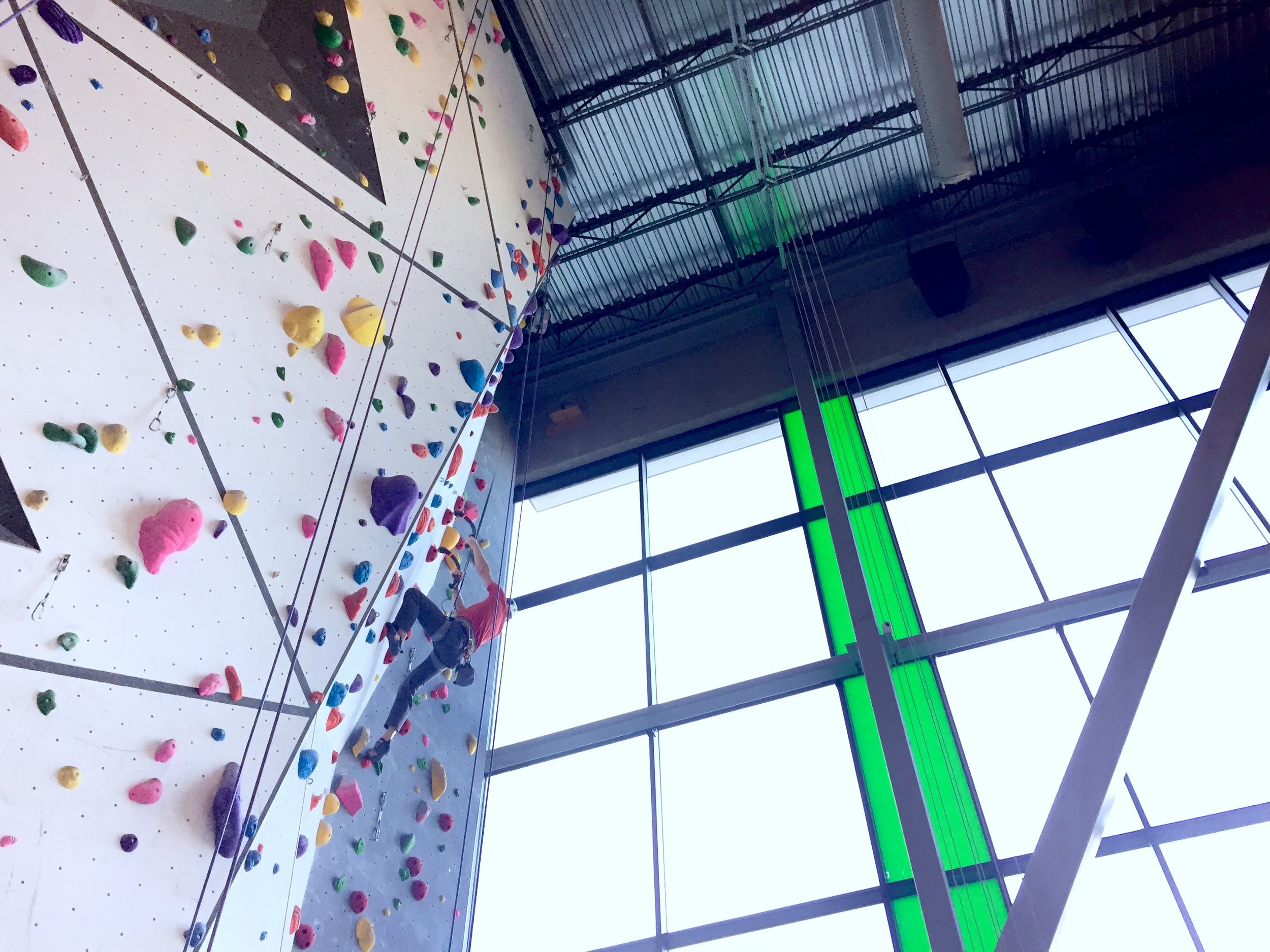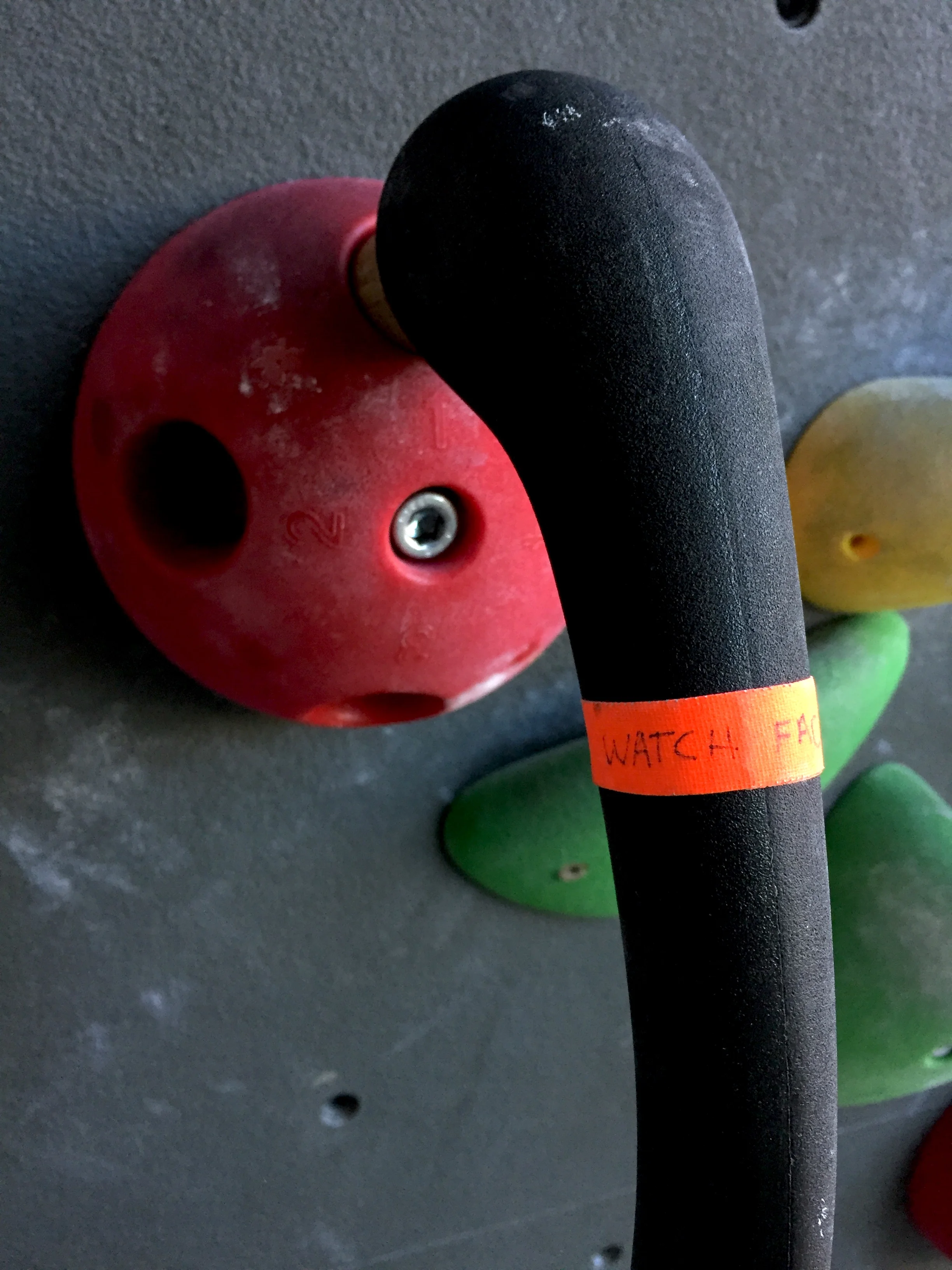We have the new Atomik Tomahawks and matching drytooling holds and set a route to allow you to practice and train for ice-climbing, or give it a try for the first time. Build your arm and grip strength and practice good body positions for those icy sends. Talk to the desk to get the tools, a helmet, and the low-down before you give it a go.
A few tips:
1. Always wear a helmet, and keep the visor down. Ice tools can pop out at anytime and hit you in the face. If you fall and leave the tool behind, you might pull the tool out and have it land on your head. So protect that dome!
2. Leash the tools to your belay loop, not your gear loop. If you fall and hang on the tool, you want the force to go to a part of your harness designed to take the load.
3. Pull on the tools on either side of your head. When stepping up and passing a placed tool, make sure you don't have the tool directly in front of your face. If it pops, you want it whistling past your ear, not crashing into your nose.
4. You can rest a tool on your shoulder to make a 'hand match' and swap your grip from left hand to right or vice versa.
5. Grab that tool! Each tool has three main positions, the lower handle, above the handle bolster and grabbing the top of the whole tool.
6. No Steinpul! The wall can't take the leverage!
Thinking about taking your ice-tools out and drytooling outside? Don't drytool on climbing routes, it's bad manners and bad for the rock. Go with someone who knows and save it for chossy garbage or designated dry/mixed/ice routes.
Psyched and want to know more? Watch the French Dry Tooling Society videos on Youtube. Episodes 5 and 6 cover technique.
Want to head outside on ice? Get training. It's still the old-schooliest of the climbing disciplines - even in 2017 the ethic is 'the leader must not fall' and for good reason. Read Will Gadd for a great post about the risks of ice climbing.



